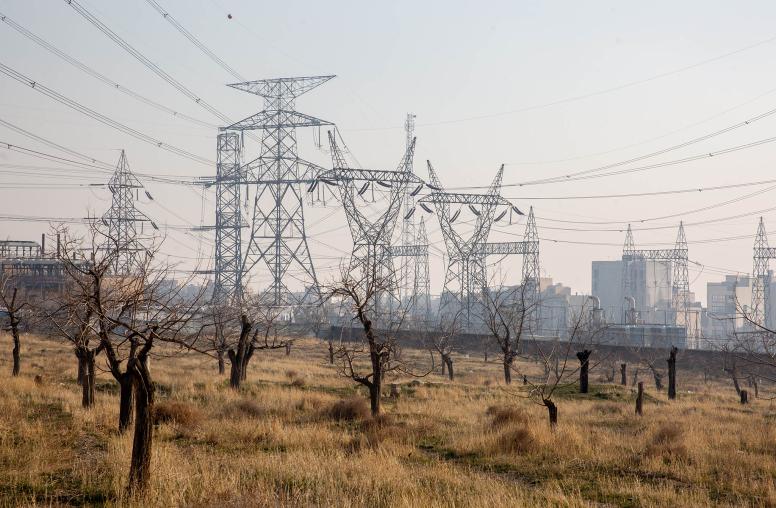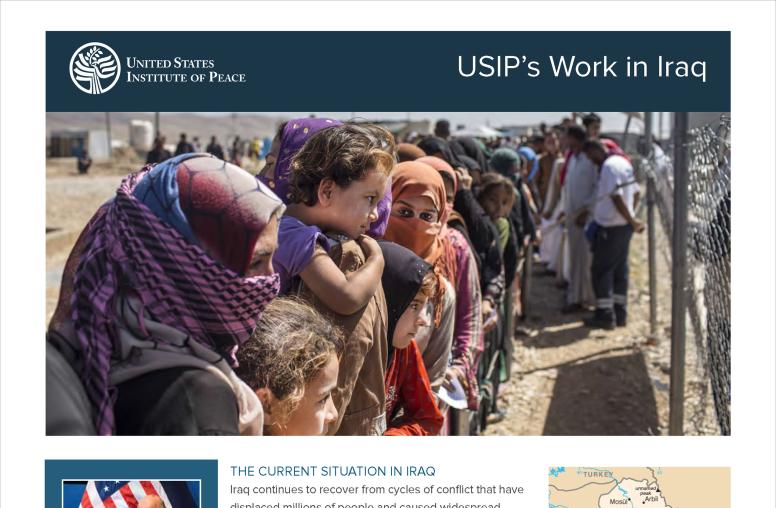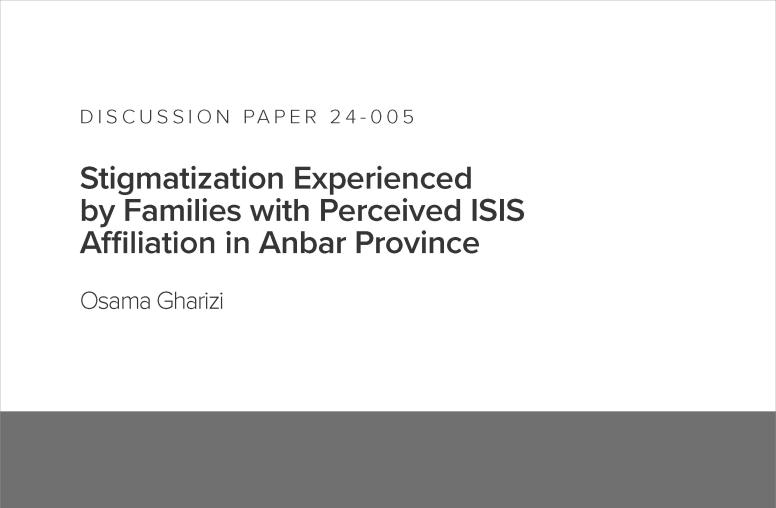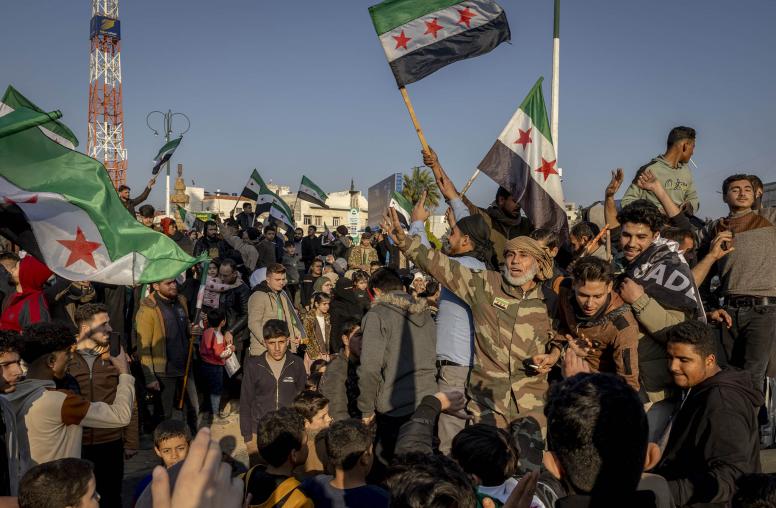Women and Violent Extremism: A Growing Threat Demands Concerted Action
The extremist organization ISIS manipulates gender dynamics far better than its opponents often understand. It recruits young men with promises of control over women and uses mass rape as a form of cohesion. At the same time, it lures isolated women with appeals to enlarge their lives by joining a cause. Policymakers seeking to address the role of women in countering violent extremism must take an equally layered, multi-pronged approach to gender, according to experts from government, the United Nations and civil society.
A comprehensive strategy to address extremist violence requires marrying the best thinking from the sphere of counter-terrorism with the world of peacebuilding. Expertise on women in conflict situations has evolved since the U.N. Security Council 15 years ago passed Resolution 1325, calling for an understanding of how war has different effects based on gender and urging a role for women in seeking to resolve armed conflict. Over roughly the same period, the U.S. government has focused energetically on terrorism.
“Protecting women must be at the heart of any global counter-terrorism response” -- Zainab Hawa Bangura, the U.N. secretary general’s special representative for sexual violence in conflict.
Joining the two strands will produce stronger policy responses, by considering women not only as victims of extremist violence but also as potential agents of change, said Nancy Lindborg, president of the U.S. Institute of Peace.
“We know women can be front and center,” Lindborg told more than 250 people at the opening of “Women and Countering Violent Extremism, a half-day discussion to help policymakers think through the issues. “There is no room to operate in separate spheres. “
The government needs help in bridging the gap between policy and practice, said Eric Postel, associate administrator of the U.S. Agency for International Development (USAID), a co-sponsor of the event along with the U.S. State Department. Timothy Curry, deputy director of counter-terrorism policy at the U.S. Department of Homeland Security, said women are a diverse and valuable resource for countering extremist violence because of their community and family roles. He called for more research on the topic by academics and think tanks.
“If we are trying to arrest our way out of this problem, we are going to fail,” he said.
While sexual violence during conflicts is as old as warfare itself, it’s a new phenomenon as a tactic of terror in countries including Iraq, Libya, Mali, Nigeria, Syria and Yemen, said Zainab Hawa Bangura, the U.N. secretary general’s special representative for sexual violence in conflict. The objectives are many-fold, she said: to destroy families and cultures; to strike fear into the hearts of civilian population; to furnish fighters with women to boost recruitment and retention; to give birth to a new, malleable generation; and to raise funds through the sale of women in slave markets or from ransom paid by their families.
The Political Economy of Sexual Violence
As a source of financing, sexual violence has become a key tool in the “political economy of terrorism,” Bangura said. Yet the treatment of women remains a “collateral issue rather than a central concern” in fighting it. “Protecting women must be at the heart of any global counter-terrorism response,’’ she said. “This is a security imperative.”
On a recent trip to Iraq, Bangura heard devastating stories of sexual violence from Yazidi women who escaped their captors in ISIS, also known as ISIL or by its self-adopted moniker “Islamic State.” One teenager had been forced to marry 15 men, some for as few as three days. Some were soaked in gasoline and burned for refusing to cooperate.
A girl sold as a sex slave in the markets of the Syrian city of Raqqa, the “capital” of the self-declared Islamic State, is likely to change hands five times, she said. A Christian or Yazidi girl aged 10 to 20 fetches $120, according to an official ISIS price list Bangura cited.
Her U.N. office is working on a multi-faceted strategy to address sexual violence in the Middle East. The approach includes mobilizing international political commitments, ensuring women a central role in developing counter-terror strategies, and designing frameworks for prosecuting aggressors.
Despite gaps in understanding of why individuals turn to ideologically driven violence, research suggests empowerment of women pays off in the context of countering violent extremism, said Robert Berschinski, deputy assistant secretary of state in the Bureau of Democracy, Human Rights, and Labor. Resolution 1325 doesn’t mention the issue but the peace and security agenda it embodies, calling for protection of women from sexual violence in armed conflicts and women’s participation in politics and peace processes, ties directly to women’s roles as victims and perpetrators, supporters and inhibitors of violent extremism, he said.
“Whether seeking to make peace agreements more durable, or stopping radicalization before it begins, addressing root causes and legitimate grievances matters a great deal,” Berschinski said. “You can’t do that if you exclude women, and more broadly civil society, from these discussions.”
Anwarul K. Chowdhury, who led the campaign for Resolution 1325 as Bangladesh’s ambassador to the U.N. when the country held the Security Council presidency, argued that “we would not have to worry about countering extremism if women had equality in decision-making’’ on how to prevent it. He pressed the case for pushing more of the 193 U.N. member states to join the 48 that have approved the National Action Plans called for in Resolution 1325 to outline how a nation intends to meet the goals of the measure.
Militarism to Impose Views
The short-lived euphoria of the Arab Spring has given way to a targeted and brutal pushback against women in public life, Chowdhury said. Militarism and militarization are deepening in the region, while a fluid global arms trade makes it easier for extremists to impose their views.
“It is a reality that politics and, more so, security are a man’s world,” he said.
Carla Koppell, the chief strategy officer at USAID, said the 15th anniversary of Resolution 1325 is the first chance the U.S. government has had to update its National Action Plan by evaluating and building on progress in integrating women, peace and security objectives across the full range of conflict-related programs. That provides a “perfect entry point” for thinking about gender issues as applied to countering violent extremism.
Her takeaways:
- Develop and adopt stronger protections and support for women and girls who are vulnerable to and victims of extremist and insurgent groups.
- Expand and enable counter-insurgent networks among vulnerable women and youth.
- Expand research on better protection strategies and on how women can systematically provide early warning, help de-radicalize former extremists and join in hindering recruitment.
- Involve women in the security sectors of government and international bodies.
- Leverage better social media that elevates women’s voices.
Bangura framed the human dimensions of the challenge:
“Imagine a young lady, very religious, father [a] professional working 16 hours a day. Her mother is a housewife. She comes from school, goes into her bedroom – [she’s] not allowed to go into places her peers go. She has a computer in her room, access 24 hours a day. We’ve all been young girls. She wants adventure, she wants to do something that counts, she wants to be doing something. A lot of time, these are the girls recruited. They are lonely. They are caught between two worlds, and the family wants to keep them in the old [one]. When we look at root causes -- why is it educated girls from good backgrounds are joining -- they want adventure. This is what ISIS promises.”
Bangura continued, closing the loop to the West’s response:
“ISIS has a policy to bring brilliant women from around the world. They will spend six hours a day online to recruit a woman. They understand how critical it is to have women. They have deployed smart women, and we are still talking.”



